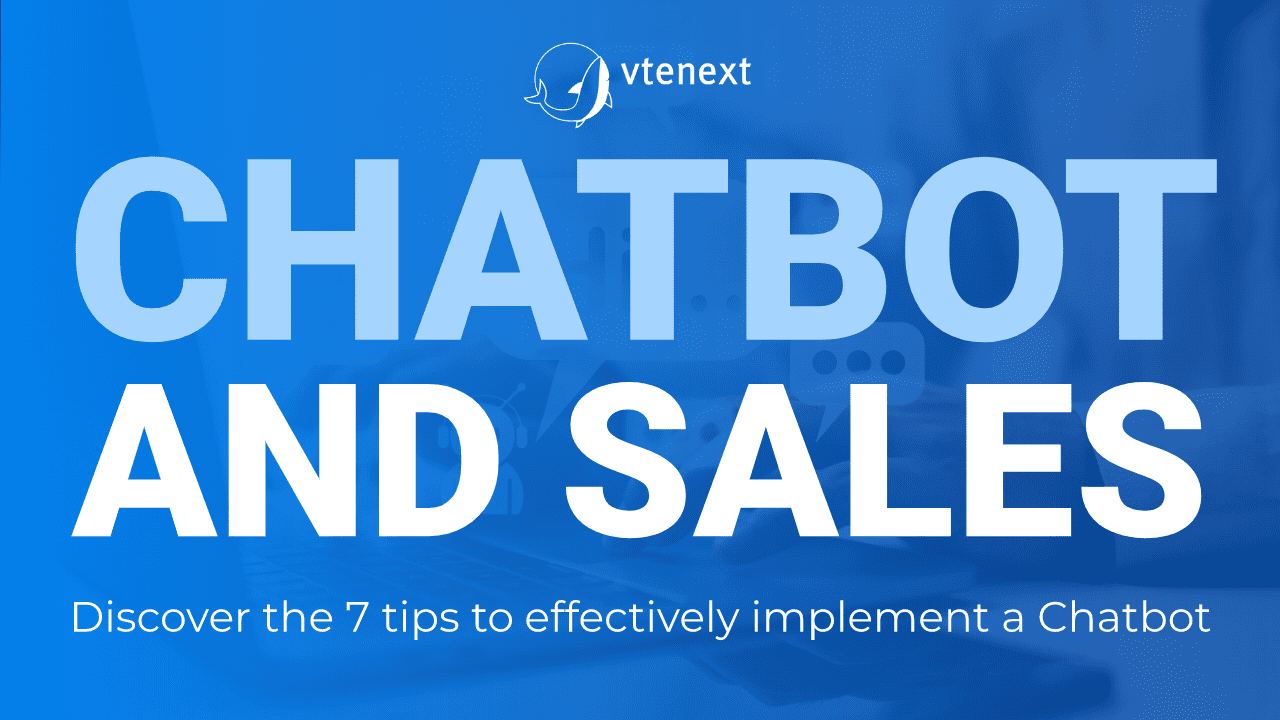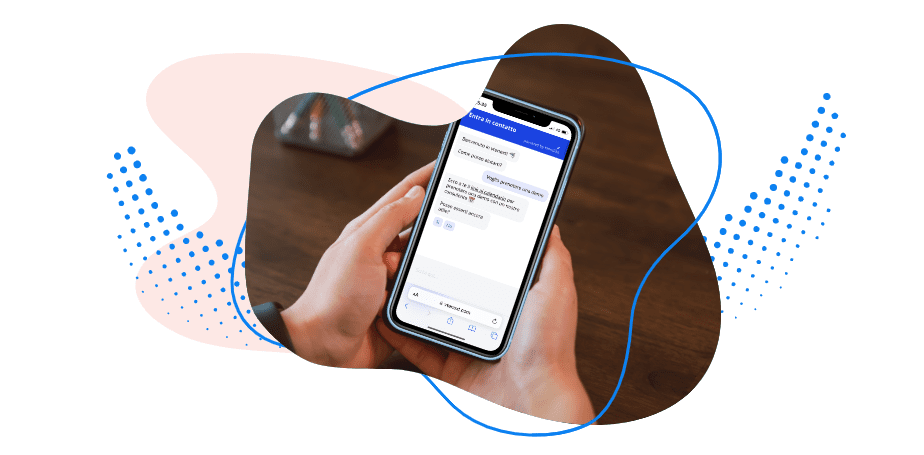Increasing sales is a common goal for every company.
Reaching it, without improving your sales team is now possible thanks to a Chatbot.
Innovations within the conversational Artificial Intelligence world changed the way companies can use a Chatbot for sales.
Chatbots can offer unique and customized experiences directly inside the chat window. They can involve customers with smart and contextualized communications, generate leads, provide fast answers and carry out front desk activities without effort.
What are Chatbots?
Chatbots are software applications based on conversational Artificial Intelligence, used to communicate with customers without human supervision. They get their intelligence from automatic learning programs (Machine Learning) and can be trained through a set of starting data useful to understand human conversations. The more they train with different sets of data, the more their communication will be effective and natural.
However, Chatbots have old origins. Everything started in 1950 when Alan Turing published the article “Computer Machinery and Intelligence” in the Mind magazine presenting the Turing test which, during the following years, became really famous. Can a machine think? How much time does it take to understand that we are talking with a machine, and not with a human being?
Joseph Wiesenbaum created the first Chatbot, Eliza, in 1966 and since that moment, progress of “expert systems” led us to an era in which conversations with Chatbots are normal and almost as natural as conversations with a human being.
Gartner foresees that, during the next two years, 47% of brands are going to use Chatbots for customer service and the 40% will implement virtual assistants. (Gartner, 2022
Chatbots are going to manage many conversations with customers, but this does not mean that everything is going to be okay. Challenge is not developing a Chatbot, but making it work properly.
7 tips about how implementing a Chatbot
How do we implement a Chatbot?
start with a single process to decrease the complexity.
they require a specific development and a huge set of data, which our Chatbot can learn.
it is important that the Chatbot understands in a smart way the user’s questions, as well as learning through conversations.
the more a Chatbot is connected to internal systems the more it becomes complex.
many companies keep trying to understand how much a Chatbot has to assume human traits or answering without emotions as a software. This question cannot be answered in a unique way: it depends on the use case. Do you want the Chatbot to entertain and make users smile or does he just have to provide information in a simple and direct way?
once the Chatbot is ready, test it with a selected group of users and be sure it offers the desired performances and satisfaction.
keep checking Chatbot performances and add gradually more competences. In this way, you will increase the complexity gradually.
What can vtenext and Klondike Chatbot do?
vtenext integrates Klondike technologies, a society which automates business processes through Artificial Intelligence.
Klondike can manage different kinds of Chatbot:
- Lead’s Chatbot: it manages your website visitors and qualify leads to make them easy to be effectively managed
- Employees’ Chatbot: support collaborators when they have specific questions (how to create a lead within the CRM, how to sell a specific product, technical information, FAQ)
- Customer Service’s Chatbot: it answers customer’s requests. The answer can be fully automatic or assisted.
- Process Bot: it is not exactly a Chatbot; it is an assistant, which helps you in following BPM processes (Business Process Management) defined in vtenext.
Chatbot for the lead management
The Chatbot born by the integration between vtenext and Klondike can make different actions:
- Engage proactively visitors within your website: the Chatbot can begin the conversation with users through a simple “Hello”, with a popup or a sound effect. A better experience with the Chatbot by more involved users can improve your company’s reputation and increase conversations by 60% and chances of generating leads by 40% (Chatbotslife.com).
- Automate meetings planning: website visitors can instantly ask for a demo and choose the date they want.
- Qualify leads for you: the Chatbot can make specific questions to potential customers to facilitate the qualification process. How can I help you? How much is your budget? When do you want to start with the project? These are only few examples
- Customize conversations for different audiences: you can create Chatbots for different customer segments. For example, visitors who land for the first time on your website could want to know some details of your activity during the conversation.
Else, if we are talking about a returning visitor you can ask more specific questions, which help you in the lead qualification process. - Customize conversations to qualify leads depending on the website section: you could have the need to make different questions based on the product or service you are offering.
As you probably understood, customization is a fundamental aspect of the Chatbot born by the integration between Klondike and vtenext.
Customization means surprising the visitor through your website with involving, tailor-made conversations; it means making an effort and understanding your customer’s needs.
Business Wire says that 77% of B2B Sales and Marketing Professionals think that customized marketing experiences improve relationships with customers.
Chatbots are the easiest and fastest way to reach this important objective and make unique and memorable experiences with your company.

